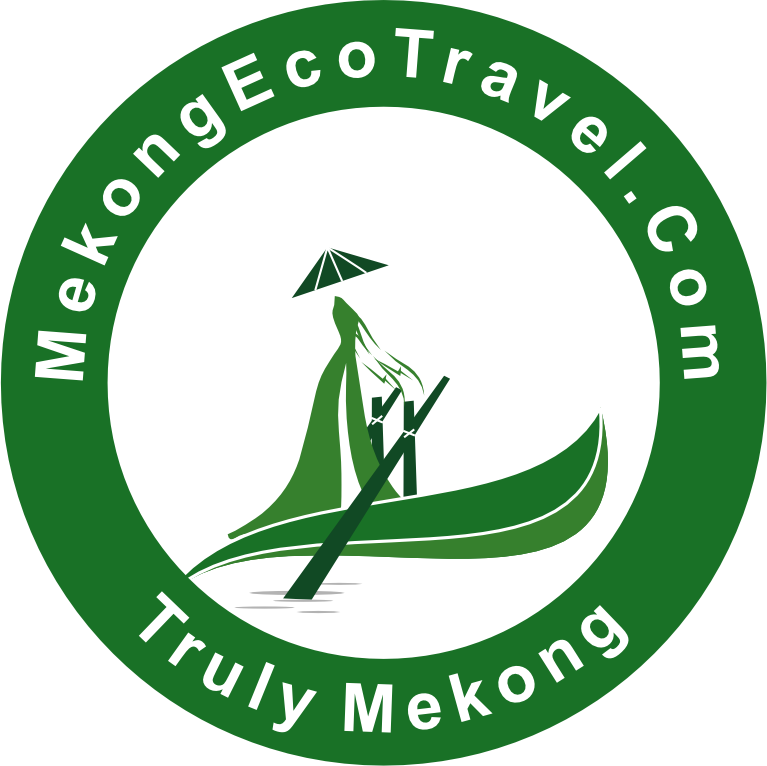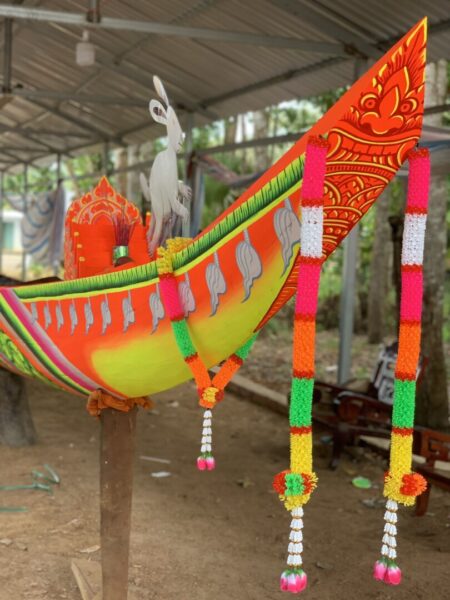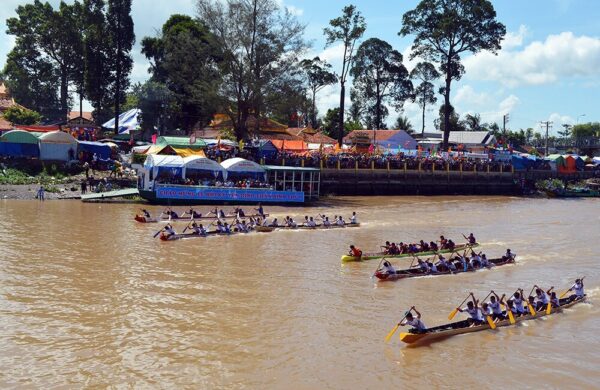BOAT BUILDING IN THE MEKONG DELTA
In addition to the profession of rice cultivation and fishing, like other ethnic groups, the Khmer people also have a variety of handicraft activities to contribute to improving their economic life or to meet their spiritual, religious and mental needs. The Khmer people have a number of main traditional occupations. The most typical is Boat Building.
The Khmer people in the South have the custom of Boat racing (ghe ngo) every year in the 10th lunar month during the Moon Greeting Ceremony (Ooc Om boc) to express gratitude and thanks to the moon for bringing water for good crops, and now pray for the moon to give up its power to the sun to make the rice ripen quickly so that the upcoming harvest will yield a lot of rice. Therefore, the ghe ngo is a typical symbol in their agricultural life.
Since the first centuries AD, people in the Southwest have used wooden boats to travel. Khang Thai of the Eastern Wu Dynasty (3rd century) recorded in “Phu Nam Ky”: In the kingdom of Phu Nam, people used axes to carve tahan trees into dugout canoes up to 12 spans long, 3/4 spans wide (3/4 spans), the head and tail looked like fish. Each boat was decorated with flower-shaped iron plates. The largest boat could hold a hundred people. Each person held a long or short rowing oar and a pole. From the head to the tail of the boat there were 50 people, or more than 40 people, depending on the size of the boat. The standing people used long oars, the sitting people used short oars. In shallow water, they used poles. They rowed the boat to rhythmic shouts.
Later, the archaeological activities of Malleret in the Southwest region in the early 20th century, and recently (late 20th century) of Vietnamese archaeologists discovered many traces of wooden boats from the 7th century onwards in this area. Thus, it can be understood that building wooden boats is a long-standing tradition of the residents of the Southwest. Boats are made of Sao wood, which grows on high mountains guarded by sacred elephants. Before cutting down the tree, one must offer a gift to the elephant god, including a pig’s head and a bunch of bananas, then write on the tree trunk that after 7 days the tree will be cut down and the spirit will leave the tree within that time. When cutting down the tree, no one is allowed to say anything. Later, Sao trees grew (planted) in pagodas. Before cutting down the tree, one must get the consent of the abbot of the pagoda. Then one must offer a gift (incense, candles, cakes and fruits) to the god of land and water to protect the pagoda, asking to cut down the tree to make a boat for the pagoda to maintain traditional customs (each pagoda has its own boat). Building a boat takes about 2 and a half to 3 months. The boat and oars are usually painted black, and at the head and stern of the boat, three yellow and red circles are painted, similar to the circles on the neck of a cobra. On the day of the launching ceremony, the bow of the boat is turned to the east, on which are placed offerings covered by a red parasol. Offerings are also placed on the fifth crossbar, the middle crossbar and at the stern. A hut is erected on the middle bar to invite the gods (earth, water) to witness the ceremony. Red cloth is hung on the bow and stern. Music is played and the eye-pointing ceremony is performed. According to legend, the eyes of the boat are only attached when a virgin passes by. And, without letting the girl know, the craftsman immediately uses nails to nail the eyes to the boat, so that the “spirit” of the virgin will bless the rowers with strength in the races. The master of ceremonies (Achar) invites the gods to witness to protect the races and to heal illnesses. In addition, there is a spirit possession during the ceremony. The female spirit medium (when in a spirit) will bless the boat, the rowing team, and the audience. The boat launching ceremony is to pray for rain and to receive blessings, always held in the pagoda, very solemn.
The Ngo boat is a sacred object symbolizing the intangible culture of the Khmer people in the South, from the time of choosing trees, cutting trees, building the boat to launching and marking the eyes. The participants in these processes have put all their heart and soul into performing them in accordance with tradition. Looking from this perspective, the cultural significance of Ngo boats and Ngo boat racing will be clearer.
Currently, in the South, large pagodas all have Ngo boats and people building Ngo boats. The Ngo boat racing ceremony is a big festival of the whole region, attracting all ethnic groups to join in the fun.
To understand deeper about the culture in the south of VietNam: MekongDelta Region. Do not be hesitate to contact us for booking the tour or check our reviews from all my guests join with us via Tripadvisor MekongEcoTravel: https://www.tripadvisor.com/Attraction_Review-g303942-d26314076-Reviews-MekongEcoTravel-Can_Tho_Mekong_Delta.html


